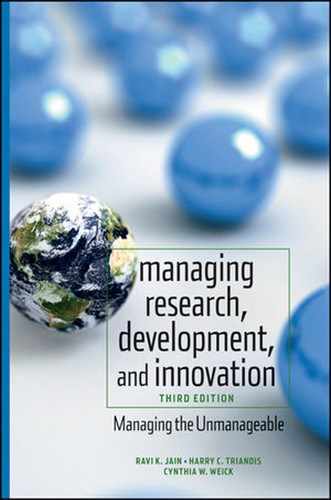Naveh (January 2007) Formality and Discretion in successful R&D projects. Journal of Operations Management, 25(1), 110–125.
Nelson, L. J., and D. T. Miller (1995). The distinctiveness effect in social categorization: You are what makes you unusual. Psychological Science, 6, 246–249.
Newton-Smith, W. H. (1981). The Rationality of Science. London: Routledge and Kegan.
Newton, T. J., and A. Keenan (1985). Coping with work related stress. Human Relations, 38, 107–126.
Nisbett, R., and L. Ross, (1980). Human inference: Strategies and shortcoming of social judgment. Englewood Cliffs, N.J. Prentice-Hall.
Norman, A. (1998). Managing Conflict: Building a Multicultural Collaborative. Cities, 15(3), 209–214.
Ohmae, K. (1988). Getting back to strategy. Harvard Business Review, 149–156 (November-December).
Organisation for Economic Co-operation and Development (OECD) (1993). The Measurement of Scientific and Technical Activities. OECD Publication.
Organisation for Economic Co-Operation and Development (OECD) (2007). Science, Technology and Industry Scoreboard. Danvers, MA: OECD Publication.
Organisation for Economic Co-Operation and Development (OECD) (2009). OECD Patent Statistics Manual.
Osborn, A. F. (1979). Applied Imagination. New York: Scribner.
Oxtoby, B., et al. (2002). Developing Organizational Change Capability. European Management Journal, 20(3), 310–320.
Ozer, M. (1999). A survey of new product evaluation models. Journal of Product Innovation Management, 16(1), 77–94.
Parboteeah, K. P., et al. (2005). How effective are professional development activities for R&D engineers. Journal of High Technology Management Research, 16(1), 23–36 (September).
Pelz, D. C. (1956). Some social factors related to performance in a research organization. Administrative Science Quarterly, 1, 310–325.
Pelz, D. C., and F. M. Andrews (1966a). Autonomy, coordination, and simulation in relation to scientific achievement. Behavioral Science, 2, 89–97.
Pelz, D. C., and F. M. Andrews (1966b). Scientists in Organizations. New York: Wiley.
Perez-Freije and Enkel (February 2007). Creative Tension in the Innovation Process: How to Support the Right Capabilities. European Management Journal, 25(1), 11–24.
Perkman, M., and K. Walsh (2007). University-industry relationships and open innovation: towards a research agenda. International Journal of Management Reviews, 9(4), 259–280.
Peters, T. J., and R. H. Waterman (1988). In Search of Excellence-Lessons from America's Best Run Companies. New York: Harper & Row.
Peters, T. J., and R. H. Waterman (1982). In Search of Excellence: Lessons from America's Best-Run Companies. New York: Harper & Row.
Porter, M. (1998). Clusters and the new economics of competition. Harvard Business Review, 77–90 (November–December).
Porter, M. E. (2008). The five competitive forces that shape strategy. Harvard Business Review, 79–93 (January).
